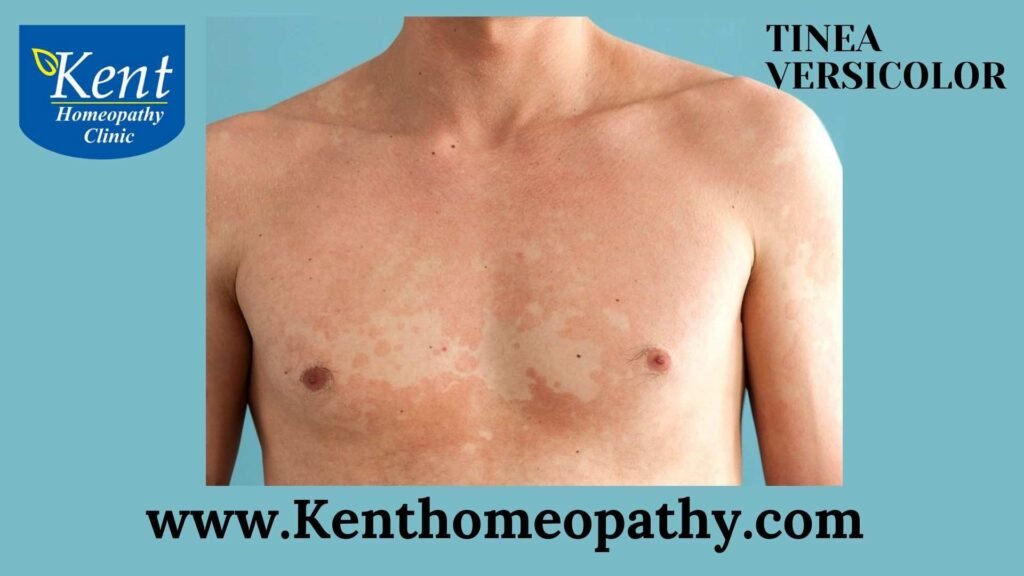Tinea Versicolor

Tinea Versicolor: Unveiling Symptoms, Causes, and Types
Tinea versicolor is a common skin condition caused by an overgrowth of the yeast Malassezia on the skin. While the condition is usually harmless, it can cause noticeable changes in skin color and texture. Understanding the symptoms, causes, and types of tinea versicolor is crucial for accurate diagnosis and effective treatment.
Symptoms:
- Hypopigmented or Hyperpigmented Patches:
– Tinea versicolor typically presents as patches on the skin that are lighter (hypopigmented) or darker (hyperpigmented) than the surrounding skin. The patches may vary in size and shape.
- Scaling and Flaking:
– Affected areas often exhibit fine scaling and flaking, creating a surface that may resemble a fine layer of powder on the skin.
- Mild Itching:
– Itching is usually mild, but some individuals may experience discomfort or irritation in the affected areas.
- Worsening in Heat or Humidity:
– Symptoms of tinea versicolor often worsen in warm and humid conditions. Increased sweating can contribute to the overgrowth of Malassezia.
- Common Areas of Involvement:
– Tinea versicolor commonly affects areas with a high concentration of sebaceous (oil) glands, such as the chest, back, neck, upper arms, and shoulders.
Causes:
- Malassezia Yeast Overgrowth:
– The primary cause of tinea versicolor is the overgrowth of the yeast Malassezia on the skin. This yeast is a normal component of the skin’s microbiota, but an overgrowth can lead to the characteristic skin changes.
- Warm and Humid Environments:
– Tinea versicolor is more common in regions with warm and humid climates. Increased heat and humidity create favorable conditions for the overgrowth of Malassezia.
- Oily Skin:
– Excessively oily or seborrheic skin is associated with an increased risk of tinea versicolor. The yeast Malassezia thrives on the lipids present in sebum, contributing to its overgrowth.
- Immunosuppression:
– Conditions or medications that suppress the immune system can increase the risk of tinea versicolor. This includes conditions like HIV/AIDS or the use of immunosuppressive medications.
- Hormonal Changes:
– Hormonal changes, such as those occurring during puberty, pregnancy, or while taking oral contraceptives, can influence the likelihood of developing tinea versicolor.
Types:
- Hypopigmented Tinea Versicolor:
– Hypopigmented tinea versicolor is characterized by patches that are lighter than the surrounding skin. These patches can be more noticeable in individuals with darker skin tones.
- Hyperpigmented Tinea Versicolor:
– Hyperpigmented tinea versicolor involves patches that are darker than the surrounding skin. This type may be more noticeable in individuals with lighter skin tones.
- Mixed Presentation:
– Some cases of tinea versicolor may present with a combination of hypopigmented and hyperpigmented patches on the skin.
Contact to know more
Contact
Timings
Monday to Saturday:
11:00 AM to 02:30 PM
06:30 PM to 09:00 PM
